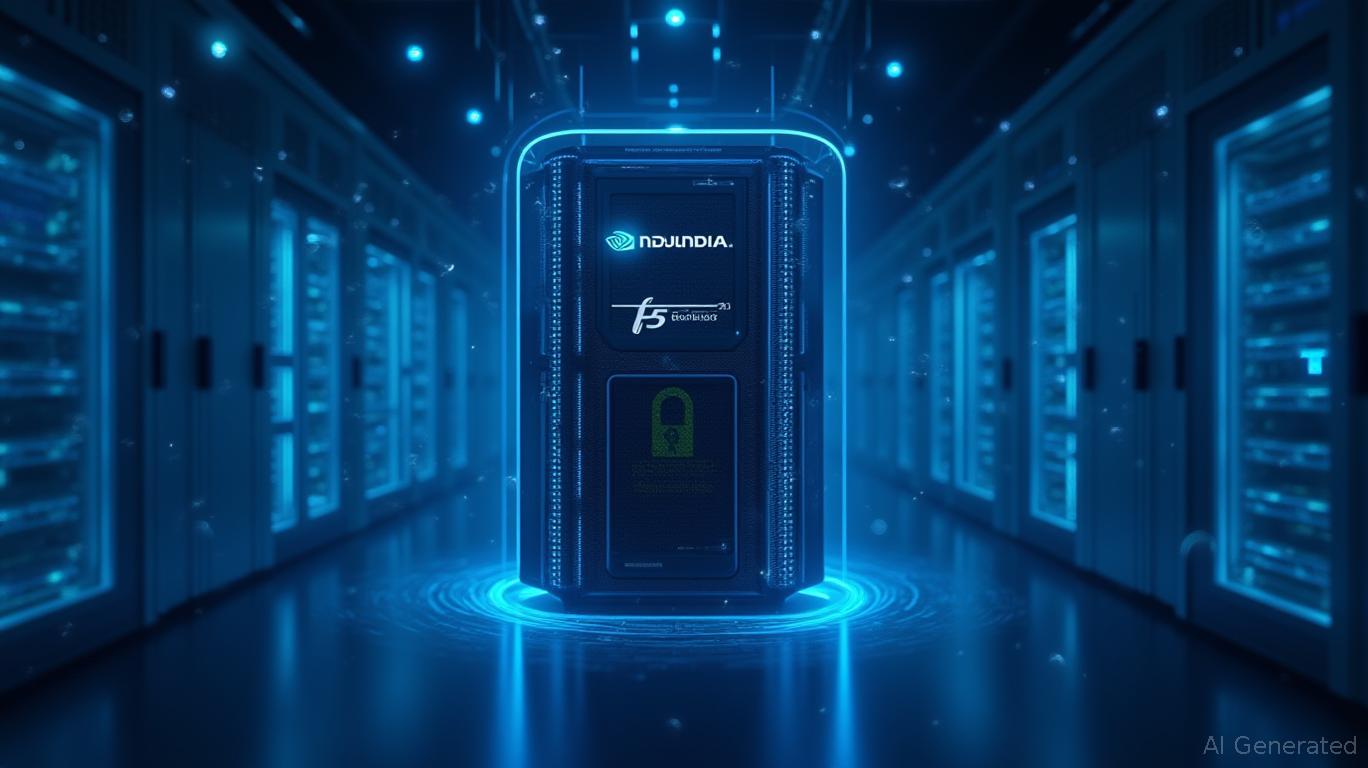F5 and NVIDIA: Pioneering the Future of AI-Optimized Cloud Infrastructure
The race to dominate AI infrastructure is intensifying, and F5 Networks (NASDAQ: FFIV) and NVIDIA (NASDAQ: NVDA) have positioned themselves at the forefront with their groundbreaking collaboration. By integrating F5's BIG-IP Next for Kubernetes with NVIDIA's BlueField-3 DPUs and DOCA software framework, the duo is tackling the core challenges of AI scalability, security, and cost efficiency. This partnership isn't just incremental—it's a paradigm shift for enterprises seeking to deploy high-performance AI workloads without compromising on performance or compliance. Let's dissect how this synergy is rewriting the rules of the game and why investors should take notice.

The Pain Points of AI Infrastructure—and How F5/NVIDIA Fix Them
AI adoption is booming, but so are its growing pains:
1. GPU Bottlenecks: AI workloads demand relentless compute power, yet legacy infrastructure often leaves GPUs underutilized due to inefficient task management.
2. Security Gaps: Open-source models and agentic AI create vulnerabilities, requiring robust protocols like Model Context Protocol (MCP) to ensure data privacy and compliance.
3. Cost Inefficiency: Overprovisioning hardware and redundant computations inflate expenses, while latency issues degrade user experience.
Enter F5 and NVIDIA's solution:
1. GPU Utilization Leaps by 20%—Validated at Scale
The collaboration's crown jewel is its 20% improvement in GPU utilization, validated by Sesterce, a European AI infrastructure operator. By offloading network and security tasks to BlueField-3 DPUs, CPUs and GPUs are freed to focus on core computations. NVIDIA's KV Cache Manager further reduces latency by storing frequently accessed data in GPU memory, enabling 10x–30x gains in token throughput (per DeepSeek testing). This isn't just theoretical—it's a tangible win for enterprises aiming to do more with their existing hardware.
2. MCP Security: A Reverse Proxy for Trust
F5's role as a reverse proxy for MCP servers is a game-changer. MCP, developed by Anthropic, allows AI models to interact with real-time data securely. F5's solution acts as a gatekeeper, verifying requests, classifying data, and enforcing protocols like GDPR. With zero-trust architecture, edge firewalls, and DDoS mitigation, this partnership shields sensitive industries (finance, healthcare) from data leaks and compliance breaches—a critical differentiator as regulators tighten oversight.
3. Smart Routing, Smarter Costs
Programmable routing isn't just about speed—it's about cost discipline. F5's system dynamically routes tasks to the most efficient LLM (lightweight for simple queries, specialized models for complex ones), slashing inference costs by up to 60%. Token metering and governance tools further empower companies to track usage and avoid budget overruns—a must-have as token generation becomes a line item on balance sheets.
Financials and Analysts: A Bullish Case, with Caveats
F5's Q2 2025 results underscore the partnership's financial impact:
- Revenue rose 7% YoY to $731M, driven by a 27% surge in systems revenue and 12% product growth.
- Non-GAAP EPS hit $3.42, a 17% jump from $2.91 in Q2 2024.
- Full-year guidance raised: Revenue growth to 6.5%–7.5%, EPS to 8%–10%.
Historical backtesting reveals a compelling yet volatile picture: such a strategy would have yielded a 47.21% return since 2020, though with a 20.22% maximum drawdown and 16.10% annual volatility. This underscores F5's earnings-driven momentum but also highlights its sensitivity to market swings—a key consideration for investors.
Analysts are split but optimistic:
- Needham (Buy, $320 target): Cites F5's leadership in private cloud infrastructure and the strategic value of AI partnerships.
- Goldman Sachs (Neutral, $300 target): Warns of valuation risks near F5's 52-week high of $313, though acknowledges the AI tailwinds.
Why This Matters for Investors
This isn't just about today's numbers—it's about long-term dominance in AI infrastructure. Key growth vectors:
1. Sovereign AI Demand: Governments and enterprises are pushing for data localization, and F5's edge CNFs (Cloud-Native Network Functions) on BlueField-3 DPUs meet this need, reducing latency for real-time apps like autonomous vehicles.
2. AI-RAN Integration: Telecoms can monetize idle RAN infrastructure via AI services, unlocking new revenue streams.
3. Token Economy: As organizations move beyond pilot projects to full-scale AI deployments, F5's cost-control tools become mission-critical.
Investment Thesis: Buy F5, but Mind the Risks
Buy: F5's AI-first strategy is paying off. With $16.87B market cap, 80.9% gross margins, and a $320 target from Needham, this stock is primed for growth. The partnership's validated 20% GPU gain and 60% cost savings are not just features—they're competitive moats.
Hold/Wait: Bulls must acknowledge risks. F5's reliance on NVIDIA's ecosystem could amplify volatility if GPU demand wanes. Additionally, valuation near 52-week highs and the stock's historical 20.22% post-earnings drawdown (per backtesting) underscore the need for caution.
Actionable Idea:
- Aggressive Investors: Buy F5 now for long-term exposure to AI infrastructure.
- Conservative Investors: Wait for a 5%–10% dip, then accumulate.
Conclusion: The Future of AI Infrastructure is Here—And It's F5 and NVIDIA
This collaboration isn't just a tech win; it's a strategic masterstroke. By solving GPU inefficiency, securing MCP interactions, and slashing costs, F5 and NVIDIA are redefining what's possible in AI. With sovereign AI and edge computing on the rise, their solution is poised to capture a $250B sovereign cloud market (IDC, 2027) and a $30B foundation model market (ABI Research).
For investors, F5 represents a rare opportunity to bet on a company not just riding the AI wave but shaping its direction. While risks exist, the rewards of owning a leader in AI-first infrastructure make this a compelling play for portfolios.
Roaring Kitty's Note: Always conduct your own research and consult with a financial advisor before making investment decisions.

Comments
No comments yet